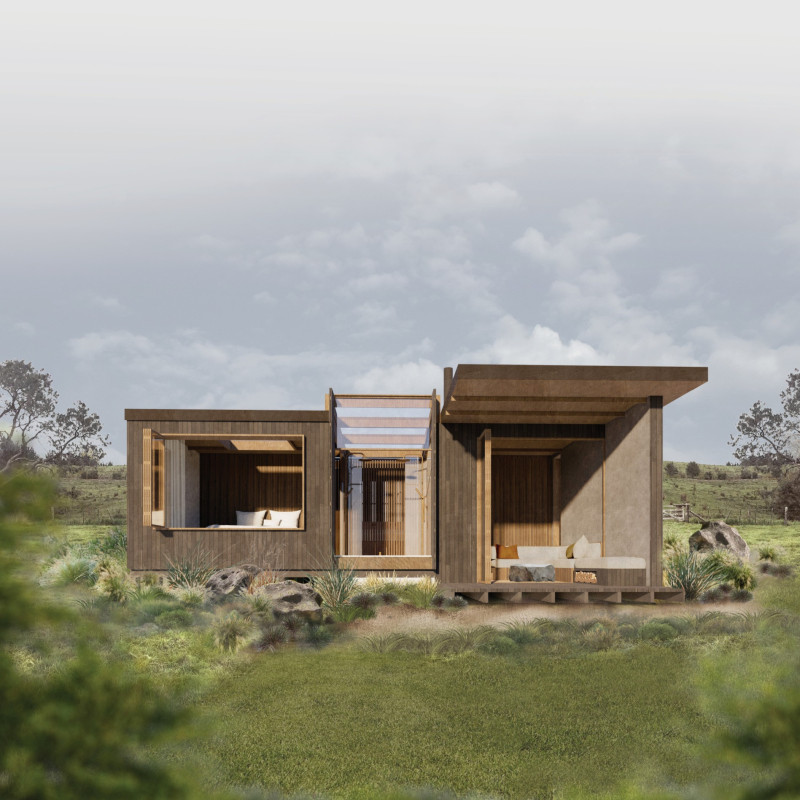5 key facts about this project
Harmony House embodies a thoughtful approach to design, situated in a peaceful area near the Firth of Thames and Coromandel Ranges. The cabin serves as a retreat for two, focusing on relaxation and deepening the connection to nature. The overall concept revolves around the idea of harmony, which seeks balance between the human-made environment and the natural world.
Spatial Organization
The layout consists of three different zones: the Resting Quarter and the Living Quarter. This division allows for clear separation of functions within the cabin. The Resting Quarter emphasizes wellness, featuring a central Wellness Core that includes a bathing area and dual basins. This core is designed to allow natural light to flood the space and provide views of the surrounding landscape, enhancing the atmosphere of tranquility.
Environmental Sustainability
Sustainability plays a key role in the cabin's design. The structure uses timber, which adds warmth and contributes to resource efficiency. Solar panels and systems for rainwater harvesting further show a commitment to reducing environmental impact. The arrangement of spaces makes the most of natural light and ventilation, allowing the cabin to function well within its environment.
Architectural Language
The design language is marked by simple forms, complemented by strategic placements of glass and a gently sloped roofline. These architectural choices provide shelter from the weather while promoting interaction with the outdoors. Features like bi-fold shutters enable easy airflow and create openings that frame beautiful views of the landscape, enhancing the experience of being in nature.
Experience and Discovery
The arrangement of spaces invites occupants to explore and engage with their surroundings. Concealed areas within the layout create a sense of curiosity, encouraging guests to wander and discover what lies beyond each corner. This thoughtful design allows for both quiet moments and lively interactions, enriching the overall experience. Each viewpoint inside Harmony House offers a distinct perspective, reflecting the careful balance between privacy and openness, underscoring the connection to the landscape outside.






















































